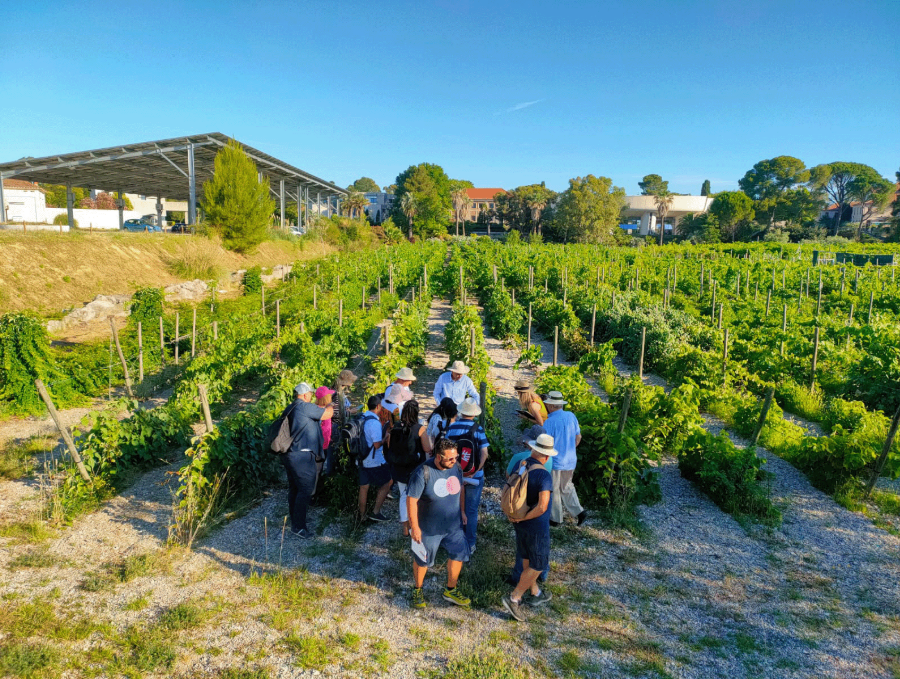For a second consecutive year, after being held in Alcalá de Henares in Spain last year, the International Course in Ampelography of the International Organisation of Vine and Wine (OIV) took place from 27 June to 1 July 2022 in Montpellier, France.
This ampelography course allowed participants to acquire in-depth knowledge in the identification and understanding of vine varieties, helping to better prepare them for future issues facing the vitivinicultural sector.
The opening ceremony was attended by Pau Roca, Director General of the OIV, Carole Sinfort, Director of l'Institut Agro Montpellier, Sylvain Labbé, President of the Occitanie-Montpellier INRAE Centre, Laurent Audeguin from the French Wine and Vine Institute (IFV) and Laurent Torregrosa, Director of the Institute for Higher Education in Vine and Wine (IHEV). They represent the establishments with which the OIV has established partnerships for the purposes of conducting the course.
The cradle of modern ampelography since the end of the 19th century, the Montpellier region has played a fundamental role in the promotion, conservation, study and research of vine varieties. Personalities such as Gustave Foex, Pierre Viala, Pierre Galet and Jean-Michel Boursiquot evoke tradition and innovation within the world vitivinicultural sector.
These aspects of tradition and innovation have formed the basis of the programme for the ampelography course that the OIV has been running in partnership with l’Institut Agro Montpellier, the French Wine and Vine Institute (IFV) and the National Research Institute for Agriculture, Food and Environment (INRAE).




Accompanied by internationally renowned professors, the 29 students of 15 nationalities had the privilege of visiting and working in three main sites: i) the Pierre Galet experimental teaching vineyard, ii) the INRAE experimental unit of the Domaine du Vassal, the largest ampelographic collection in the world with more than 8,500 accessions from 50 different countries, and iii) the Domaine de l'Espiguette, the French national center for plant material.


During the opening ceremony, a tribute was paid to Jean-Michel Boursiquot, former Vice President of the OIV and Professor of Ampelography at the Institut Agro Montpellier who retired at the end of 2020. It was the moment for the OIV to salute this eminent figure and this great professional who has contributed so much to the sector.
In addition, in order to meet its technical and scientific objectives of international scope, the Director General of the OIV was pleased to confirm that the 3rd edition of the Ampelography course will be hosted in November 2023 in Chile.
Ampelography is an emblematic discipline of the Agro Montpellier Institute and INRAE for over 140 years in Occitanie. At the service of research and viticulture, it has been marked over these many decades by world-renowned specialists, true precursors in their time and still today (Gustav Foex, Pierre Viala, Louis Ravaz, Jean Branas, Pierre Galet and Paul Truel, Jean Michel Boursiquot ...), who have raised this discipline to a high level of international recognition in the world of vine and wine. Under the impulse of these great researchers and professors of ampelography, exceptional varietal collections have been created and developed over the years with the support of the scientific and technical teams of the great school of agronomy of Montpellier and the INRAE Occitanie centre.


They are now considered as reference conservatories in the world. The Vassal ampelographic collection in Marseillan-plage and the Pierre Galet experimental teaching vineyard on the La Gaillarde campus in Montpellier bring together a diversity of grape varieties that is unique in the world. Thanks to the richness of these varietal collections and the expertise of professor-researchers who work collectively within the joint research units on the impacts of climate change on vines and wine, innovative solutions based on ampelographic knowledge are being tested in order to identify resistant varieties that are better adapted to climatic hazards.